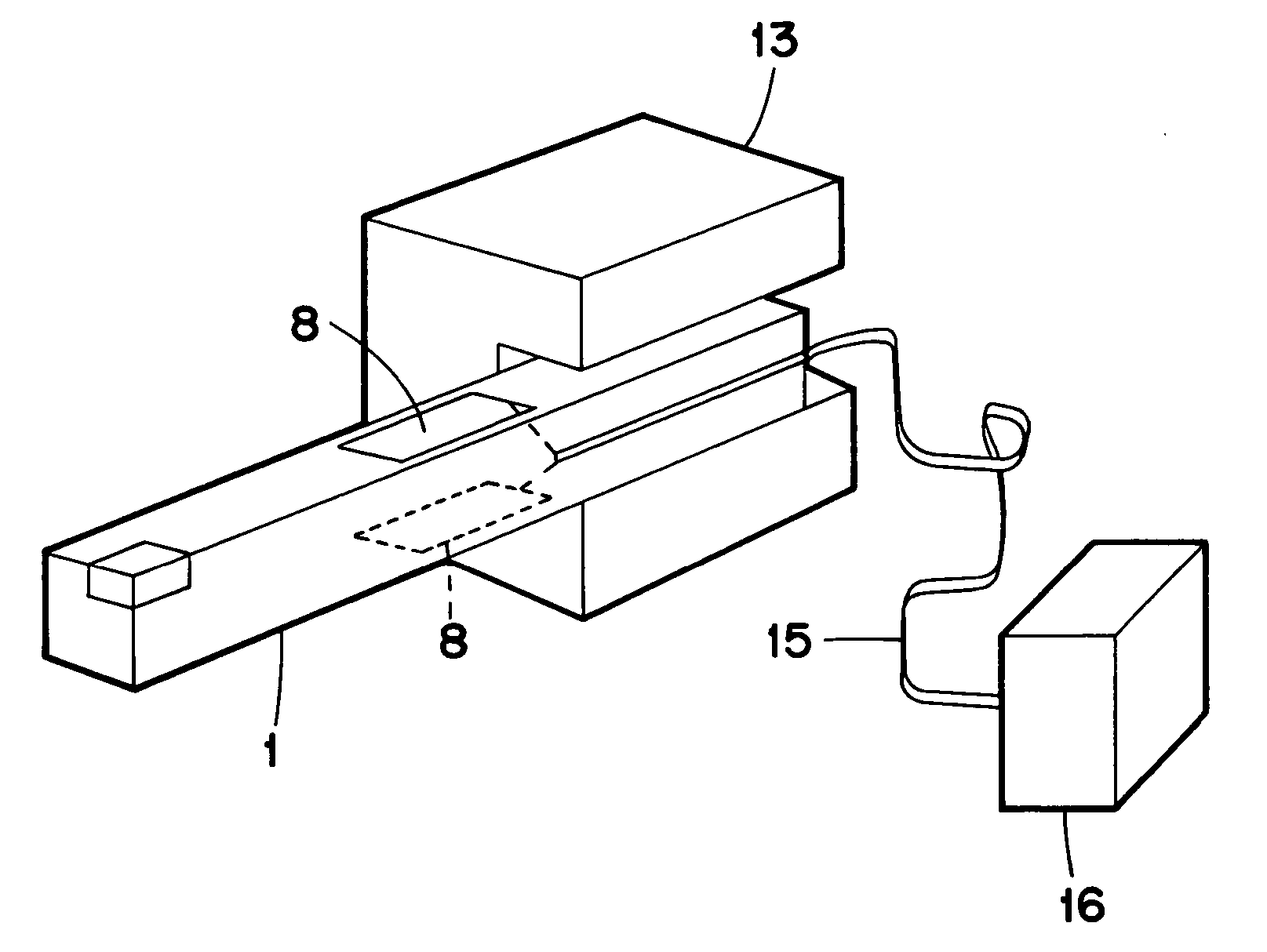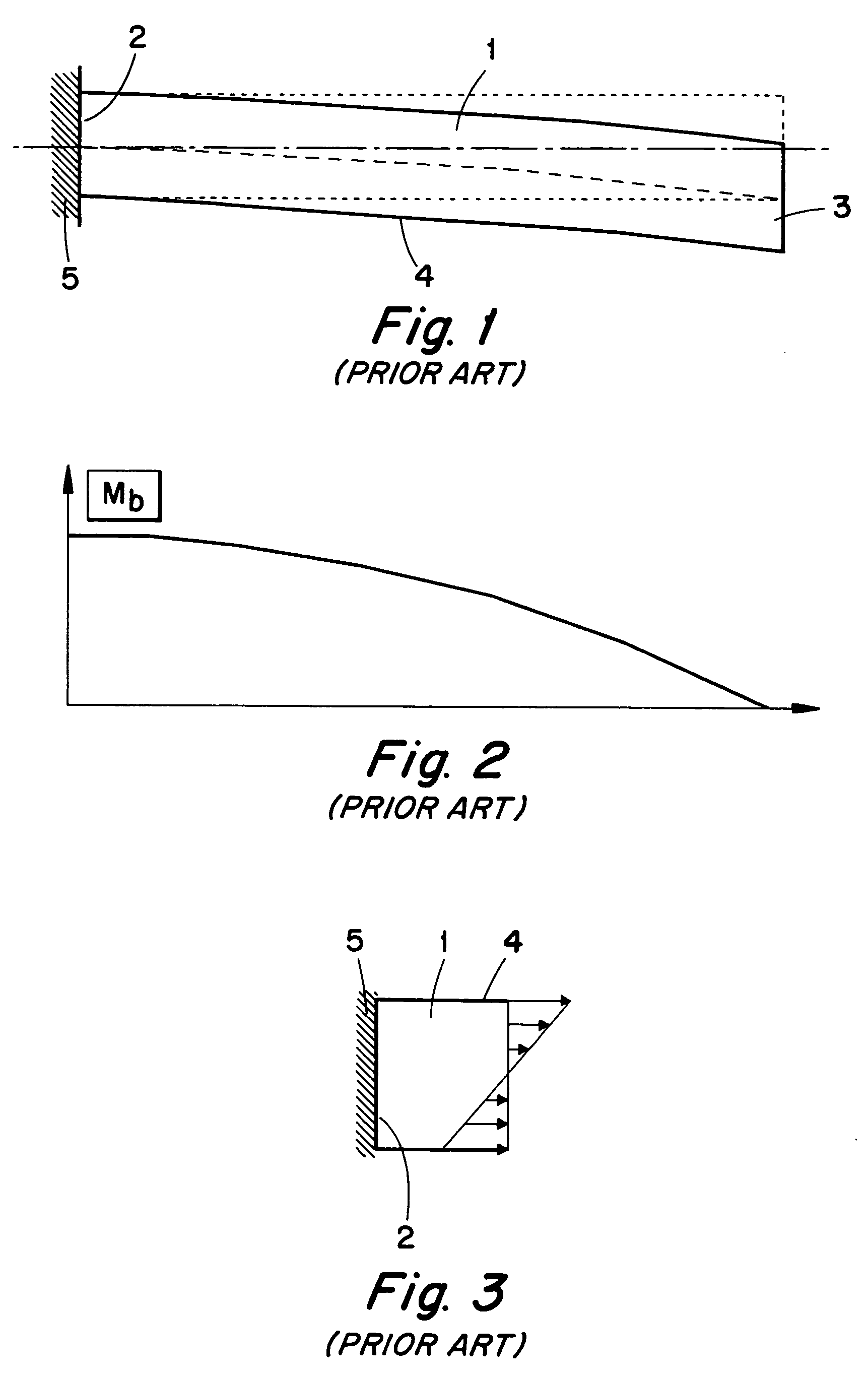Metal cutting apparatus and method for damping feed-back vibrations generated thereby
a technology of metal cutting tools and feed-back vibrations, which is applied in mechanical apparatus, auxiliaries, manufacturing tools, etc., can solve problems such as mechanical feedback vibrations, inability to accept machining, and technique work passably, and achieve the effect of improving the control of a vibration-damping devi
- Summary
- Abstract
- Description
- Claims
- Application Information
AI Technical Summary
Benefits of technology
Problems solved by technology
Method used
Image
Examples
Embodiment Construction
[0037] In FIG. 1, a long narrow body in the form of a bar or a shaft 1 of a tool is illustrated, which is intended to carry one or more (cutting) inserts of the tool during turning or milling. The body 1 has a fastening end 2 and a free, external end 3. The body has an external surface 4, which may be cylindrical or comprise a plurality of plane surfaces if the body has a polygonal, e.g. rectangular cross-section shape. The body 1 may have an arbitrary cross-section shape, however, most commonly circular or rectangular. In FIG. 1, numeral 5 designates a part in which the body 1 is fastened, the body extending cantilever-like from the fastening part. In FIG. 1, the body 1 is shown in a state when the same has been deformed in a first self-bending state or “own-mode.”
[0038] Furthermore, in FIG. 2 a graph is shown which illustrates how the bending torque Mb in this case varies along the body. As is seen in the graph, a maximum bending moment arises, and thus a maximum axial elongation,...
PUM
| Property | Measurement | Unit |
|---|---|---|
| frequencies | aaaaa | aaaaa |
| frequency | aaaaa | aaaaa |
| damping force | aaaaa | aaaaa |
Abstract
Description
Claims
Application Information
 Login to View More
Login to View More - R&D
- Intellectual Property
- Life Sciences
- Materials
- Tech Scout
- Unparalleled Data Quality
- Higher Quality Content
- 60% Fewer Hallucinations
Browse by: Latest US Patents, China's latest patents, Technical Efficacy Thesaurus, Application Domain, Technology Topic, Popular Technical Reports.
© 2025 PatSnap. All rights reserved.Legal|Privacy policy|Modern Slavery Act Transparency Statement|Sitemap|About US| Contact US: help@patsnap.com



